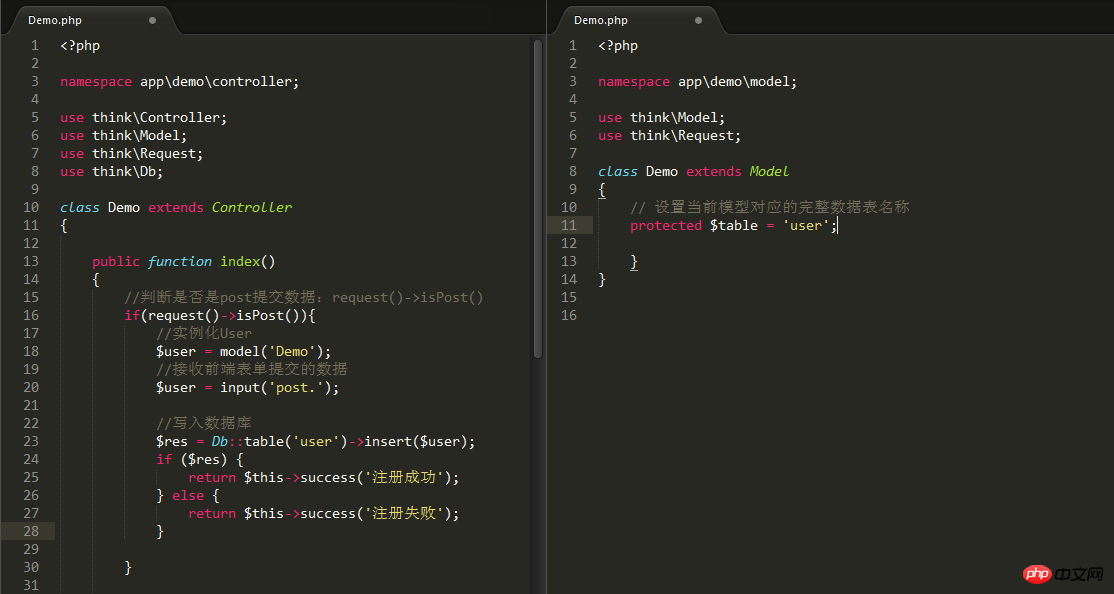
TP5--The simple implementation of addition, deletion, modification and search is very important. This article will explain its related operations in detail.
a. Letter functions such as: M, U, I, etc. cannot be used. You can use model, :url(), input() and otherassistant functionsto operate (attached is a link posted by a kind person on the official website: http://www.thinkphp.cn/topic/42108.html).
b. Get form tuning data: $str=input('post.name'); || ('Transfer method.Field name'). When writing a post. When there is no field name, all the form data is automatically obtained and written into the array.
c. Get the a tag parameter: $str=input('id'); || ('parameter name'). Only write the parameter name in the a tag, and the input assistant function can automatically determine the post or get method.
d. For data processing operations, it is recommended to write the code into the model, and then instantiate the model class through the controller ($test=model('Test');). Then copy and call the corresponding operation method in the model ($res=$test->addTest()). Then use the true||false value passed by the judgment method to perform page jump verification and display.
e. In the controller, data can only be operated through the Db assistant function. Similarly, there is no operation in the model.
f. The model name should be consistent with the data table name, so that the framework will automatically find the corresponding table when performing operations. If the naming is inconsistent, the data table needs to be declared in the model (protected $table='table name'); then directly write (Test::operation name) in the operation.
g. The command line is a good thing (attached is the link: http://www.cnblogs.com/douz/p/6811471.html)
Code example:
View:

1. Add ($user->pwd = md5(input('post.pwd')));)
Method 1:Database operationWritten into the model, the controller only calls the methods in m

Method 2:

Method 3: Use Db assistant function to directly call database operations.

2. Check: The database operation is written into the model, and the controller directly calls the method
//The select() operation of data is performed in the model
public function getUser()
{
$user = Demo::select();
return $user;
}
//Loading the view and transmitting data in the controller
$res = $user->getUser();
//Introducing the view and passing thequeryResult
return view('\demo',['res'=>$res]);
3. Change
//model Data select() operation
public function edit()
{
if(request()->isGet()){
$ res = Db::table('user')->where('id',input('get.id'))->update(['user' => input('get.user')] ) ;
if($res){
return $this->success('Modification successful');
}else{
return $this->error('Modification failed');
}
}
}
4. Delete: Use Db assistant function to call directly Database operations.
public function del()
{
//return input('id');
if(request()->isGet( )){
$res = Db::table('user')->where('id',input('id'))->delete();
if($res){
return $this->success('Deletesuccessfully');
}else{
return $this->error('Deletion failed');
}
}
}
This article is about TP5-- The simple implementation of adding, deleting, modifying and checking is explained. For more learning materials, please pay attention to the PHP Chinese website to view.
Related recommendations:
How to query the last record through mysql
Related explanations about left join on and where condition placement
The above is the detailed content of How to implement it simply through TP5-Add, Delete, Modify and Check. For more information, please follow other related articles on the PHP Chinese website!




